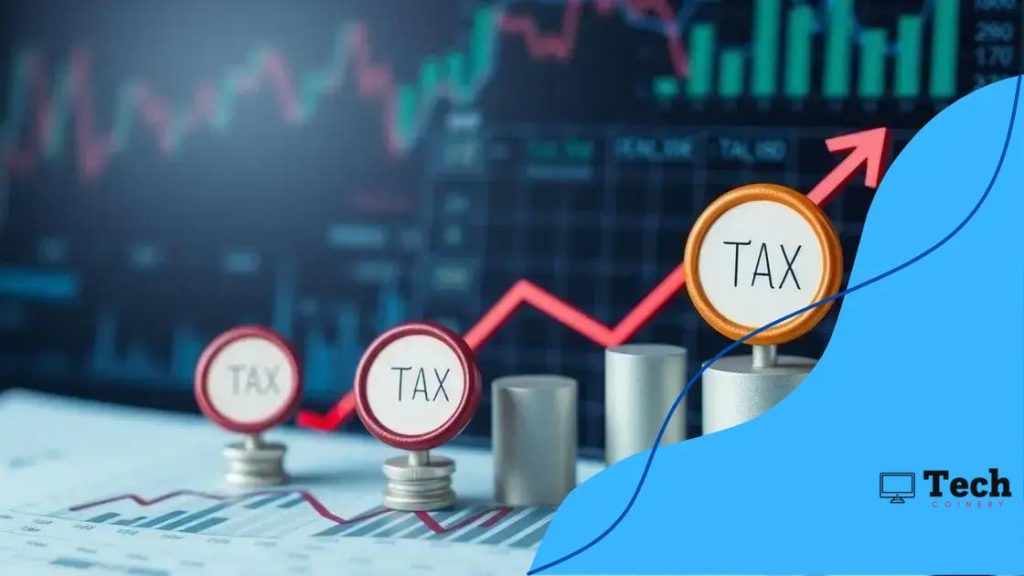Inflation-adjusted tax policy reform: what you need to know

Inflation-adjusted tax policy reform ensures fairness by modifying tax brackets and deductions to account for inflation, preventing taxpayers from facing higher rates without real income growth.
Inflation-adjusted tax policy reform can significantly affect your financial situation and how much you owe at tax time. Have you ever wondered how inflation alters your tax bracket? Let’s dive into this important topic and explore its implications.
Understanding inflation-adjusted tax policy
Understanding inflation-adjusted tax policy is crucial for anyone wanting to navigate their financial landscape effectively. Inflation can significantly impact how much you owe in taxes. By adjusting tax policies for inflation, governments aim to provide fairness and protect taxpayers from escalating costs.
What is Inflation?
Inflation refers to the general increase in prices and fall in the purchasing value of money. As prices rise, the same amount of money buys fewer goods and services, affecting consumers and taxpayers alike.
The Purpose of Adjusted Tax Policies
Tax policies must evolve to reflect changes in the economy, including inflation. When tax brackets are not adjusted, individuals may find themselves pushed into higher brackets due to inflation, increasing their tax burden unfairly.
- Preventing bracket creep
- Ensuring fair taxation
- Encouraging economic stability
Inflation-adjusted tax policies typically update the thresholds for different tax brackets. This helps to ensure that people pay taxes based on real income rather than inflated numbers. It’s important to understand how these adjustments work, as they affect disposable income and overall financial planning.
Moreover, these adjustments can influence behavior regarding savings and investments. When taxpayers know that their income will not be taxed at higher rates due to inflation, they may decide to invest or spend more, contributing to economic growth.
Real-World Examples
Many countries institute regular adjustments to their tax policies. For example, the U.S. adjusts its tax brackets annually based on the Consumer Price Index (CPI). This practice reflects rising costs and helps maintain the purchasing power of taxpayers. The adjustments vary by year, depending on how much inflation has occurred.
Understanding inflation-adjusted tax policy can empower taxpayers to make informed decisions. Staying updated on changes also allows individuals to plan for their financial futures more effectively. By being proactive, taxpayers can adapt their strategies to mitigate the effects of inflation on their finances.
Benefits of reform in tax policies
Reforming tax policies offers various advantages that can benefit citizens and the economy. By implementing changes, governments can create a more equitable tax system that reflects current economic conditions and needs.
Enhancing Fairness
One major benefit of reform in tax policies is enhancing fairness. When tax brackets are adjusted for inflation, it ensures that taxpayers are not unfairly burdened. This adjustment helps maintain a balance and protects low and middle-income earners from rising taxes due to inflation.
- Prevents bracket creep
- Reduces tax liabilities for lower incomes
- Promotes economic equity
In addition to fairness, tax reforms can stimulate economic growth. By revising tax rates and deductions, governments can create incentives for individuals and businesses to invest more. This can lead to job creation and increased spending, further enhancing the economy.
Encouraging Compliance
Another benefit of tax policy reform is fostering better taxpayer compliance. Simplified tax codes make it easier for taxpayers to understand their obligations. When tax laws are clear, individuals are more likely to accurately report their incomes and pay their taxes on time. This improvement can ultimately increase government revenues.
Moreover, reforms can also promote transparency and accountability within the tax system. By clearly communicating the reasons for changes, governments can build trust with the public. Taxpayers are more likely to support reforms when they see that their concerns are being addressed.
Long-term Economic Stability
Reforming tax policies can also contribute to long-term economic stability. By aligning tax rates with economic realities, governments can prevent significant fluctuations that might deter investment. Tax reforms can stabilize revenue streams, making government funding more predictable.
Ultimately, the benefits of reform in tax policies extend beyond just adjustments in rates. They include fostering fairness, promoting compliance, encouraging investment, and increasing transparency. Understanding these benefits helps taxpayers appreciate the importance of staying informed about how tax policies evolve.
How inflation affects tax brackets

Understanding how inflation affects tax brackets is essential for grasping personal finance. Inflation can lead to serious changes in what people pay in taxes each year, impacting overall financial planning.
The Link Between Inflation and Tax Brackets
Tax brackets are ranges of income that determine how much tax a person pays. When inflation occurs, the general price level rises. This increase can push people into higher tax brackets, sometimes referred to as bracket creep. This means individuals may pay higher taxes even if their real purchasing power hasn’t increased.
Consequences of Bracket Creep
Bracket creep can have negative effects on taxpayers. Here are some key points to consider:
- Increased financial burden on middle-income earners
- Potential discouragement from working extra hours or seeking promotions
- Taxpayers face higher rates without real income growth
When taxpayers move into higher brackets due to inflation, it doesn’t necessarily correlate with improved financial well-being. This situation raises the question of fairness within the tax system. Reforming tax policies to adjust brackets for inflation can alleviate these pressures and support taxpayers.
Adjusting Tax Brackets for Inflation
Many governments routinely adjust tax brackets based on the Consumer Price Index (CPI), which reflects inflation. This adjustment is crucial to maintaining a fair tax system. By regularly updating tax brackets, lawmakers ensure that taxpayers are not unfairly penalized for inflation.
Furthermore, adjusting tax brackets helps keep the tax system aligned with economic realities. It allows taxpayers to maintain their purchasing power and encourages social mobility. Understanding these adjustments can help individuals plan their finances more effectively, considering how inflation impacts not just their income, but also their tax obligations.
Overall, awareness of how inflation affects tax brackets is vital in making informed financial decisions. Keeping track of these changes allows taxpayers to adapt their strategies and minimize the effects of inflation on their taxes.
Practical examples of tax adjustments
Exploring practical examples of tax adjustments can clarify how these modifications impact real-life scenarios. Understanding these examples allows taxpayers to better navigate their financial situations.
Example 1: Adjusted Tax Brackets
Consider a taxpayer who earns $50,000 annually. If inflation occurs, and tax brackets are adjusted, this individual might have their tax bracket raised without an actual increase in their real income. For example, if the threshold for the 12% tax bracket was originally $50,000 and is now raised to $52,000 due to inflation adjustments, the taxpayer benefits by staying in the same tax bracket.
Example 2: Standard Deductions
Standard deductions are also subject to adjustments. If the standard deduction increases from $12,000 to $13,000 in response to inflation, a taxpayer making $50,000 effectively has a lower taxable income. This adjustment helps shield some of their income from taxation, providing an added financial benefit.
Example 3: Capital Gains Tax Adjustments
Inflation can impact capital gains tax as well. For instance, if a homeowner sells their house for $300,000 after owning it for several years, the nominal gain may seem high. However, if inflation has been significant, the real gain might be much less. Adjusting the capital gains tax for inflation can alleviate the tax burden on homeowners by considering the actual increase in value.
These examples illustrate how inflation adjustments can lead to tangible benefits for taxpayers. They emphasize the importance of adjusting tax parameters in a way that reflects economic realities. Taxpayers can benefit significantly from these adjustments, allowing for more accurate planning and financial decision-making.
Future trends in tax policy reform
Future trends in tax policy reform are shaping how governments manage their financial systems. As economies evolve, so do the approaches to taxation and public revenue. Understanding these trends can help individuals prepare for potential changes.
Data-Driven Tax Policies
Looking ahead, one of the significant trends in tax policy is the use of data analytics. Governments are adopting data-driven approaches to better assess taxpayer behaviors and needs. By analyzing income patterns, spending habits, and demographic data, policymakers can design tax systems that are fairer and more efficient.
Green Taxation
Another emerging trend is the implementation of green taxes. As awareness of climate change grows, countries are focusing on environmentally friendly tax reforms. These policies may include taxing carbon emissions or providing incentives for renewable energy usage. The goal is to encourage sustainable practices while generating revenue for government programs.
Digital Economy Taxation
With the rise of the digital economy, tax regulations are also adapting. Governments are recognizing the need to tax digital businesses effectively. Future reforms may include specific taxes on online sales, digital services, and advertising. Such adjustments ensure that tech companies contribute their fair share to public finances.
As globalization continues, international tax cooperation is becoming increasingly important. Countries are working together to combat tax evasion and ensure a level playing field. This might involve new frameworks for taxing multinational corporations, including measures that address profit shifting and transfer pricing.
Increased Transparency
Transparency in tax policy is another trend gaining momentum. Citizens are demanding more clarity on how tax revenues are spent. This trend may lead to reforms that require detailed public reporting on tax expenditures and government spending. Increased transparency can build trust between governments and taxpayers and promote accountability.
In summary, as we look to the future, the landscape of tax policy reform will likely be shaped by data analytics, environmental concerns, digital economy needs, and a push for transparency. Staying informed about these trends is crucial for understanding how they may affect individuals and businesses alike.
FAQ – Frequently Asked Questions about Inflation-Adjusted Tax Policy Reform
What is inflation-adjusted tax policy reform?
It is a change in tax laws that accounts for inflation, ensuring fairness in taxation by adjusting tax brackets and deductions.
How does inflation affect tax brackets?
Inflation can push taxpayers into higher tax brackets, leading to increased tax payments even if their real income hasn’t grown.
What are some benefits of tax policy reform?
Benefits include enhanced fairness, improved taxpayer compliance, and better economic growth through incentives for investment.
What future trends should we expect in tax policy?
Expect trends such as data-driven policies, green taxation, digital economy taxation, and increased transparency in tax spending.






